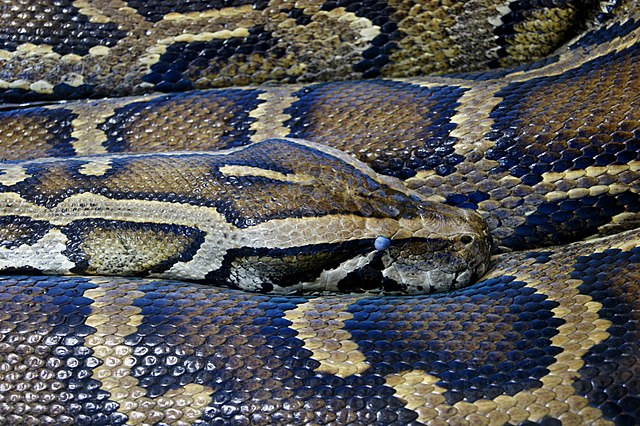Media release
From:
Farmed python meat may offer a more sustainable alternative to other farmed meats, suggests an analysis of python growth rates at two farms in Thailand and Vietnam. The findings, published in Scientific Reports, demonstrate that reticulated and Burmese pythons grew rapidly over a 12-month period despite not needing food as frequently as other livestock animals.
Environmental and population pressures are affecting conventional agriculture systems. In livestock production, cold-blooded (ectotherm) animals such as fish and insects are significantly more energy-efficient than warm-blooded (endotherm) animals such as cattle or poultry. Some endotherm food sources such as snake meat are growing in popularity in some Asian countries where they have traditionally been eaten, but the industry remains small.
Daniel Natusch and colleagues studied the growth rates of 4,601 reticulated (Malayopython reticulatus) and Burmese pythons (Python bivittatus) at two python farms based in Uttaradit Province in Thailand and Ho Chi Minh City in Vietnam. The pythons were fed a variety of locally-sourced proteins — including wild-caught rodents and fishmeal — on a weekly basis and were measured and weighed regularly over a 12-month period before being humanely culled. The authors found that both species of python grew rapidly — by up to 46 grams per day — although females had higher growth rates than males. After the amount of food consumed, a snake’s growth rate in its first two months of life was the best predictor of its body size later in life.
The authors trialed different combinations of protein sources (including chicken, pork-waste products, rodents, and fishmeal) among a subset of 58 Burmese pythons at the Ho Chi Minh farm and found that for every 4.1 grams of food consumed, 1 gram of python meat could be harvested. This food conversion ratio did not vary significantly between python diets and, in terms of protein conversion, is more efficient than other livestock studied to date. Additionally, 61 percent of these Burmese pythons fasted for periods of between 20 and 127 days, yet lost very little body mass during this time.
These findings indicate that commercial python farming could be a feasible and sustainable food production option that could complement existing livestock systems, according to the authors. They highlight the need for further research into the most effective and humane ways to produce this novel group of livestock animals



 International
International



